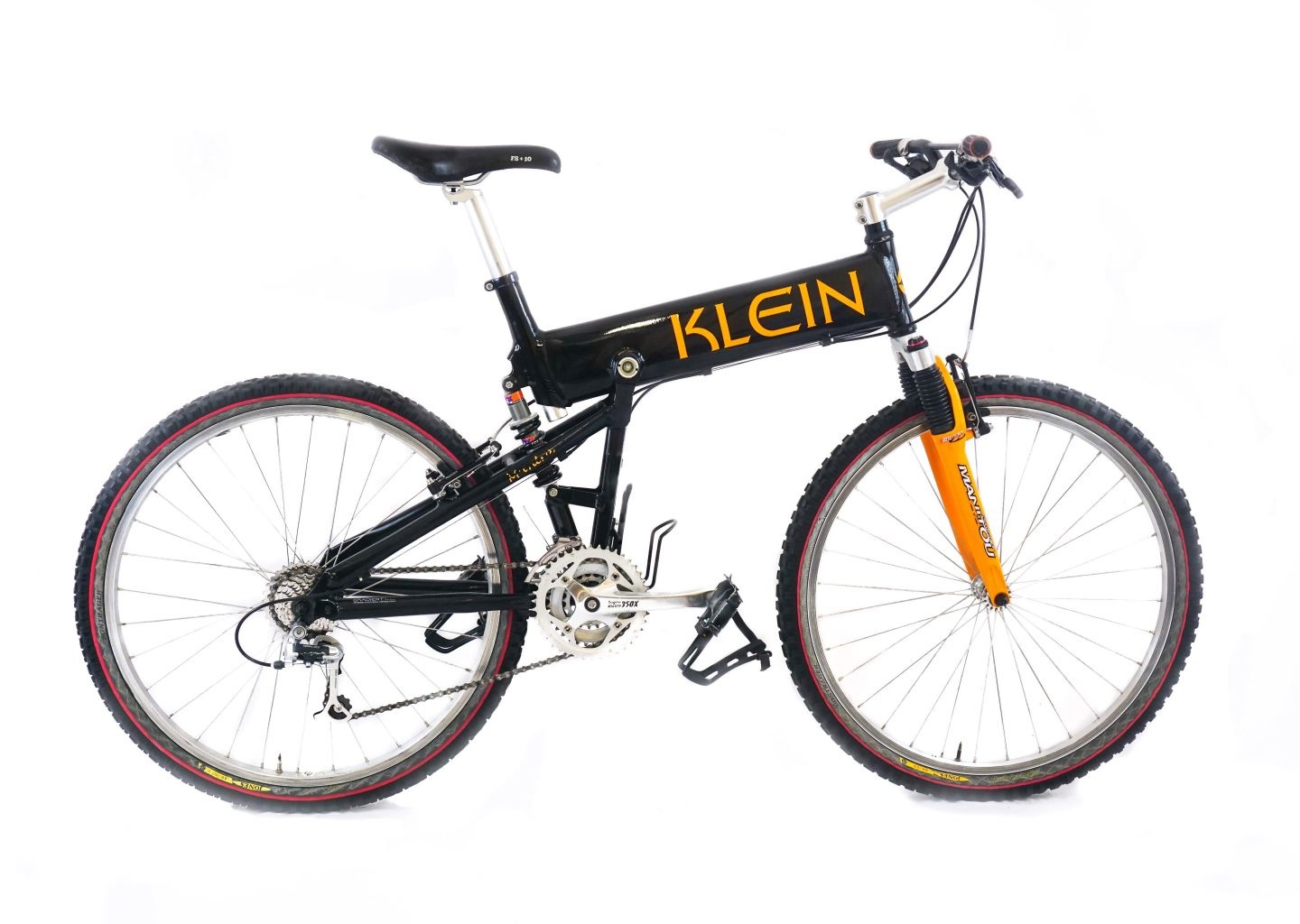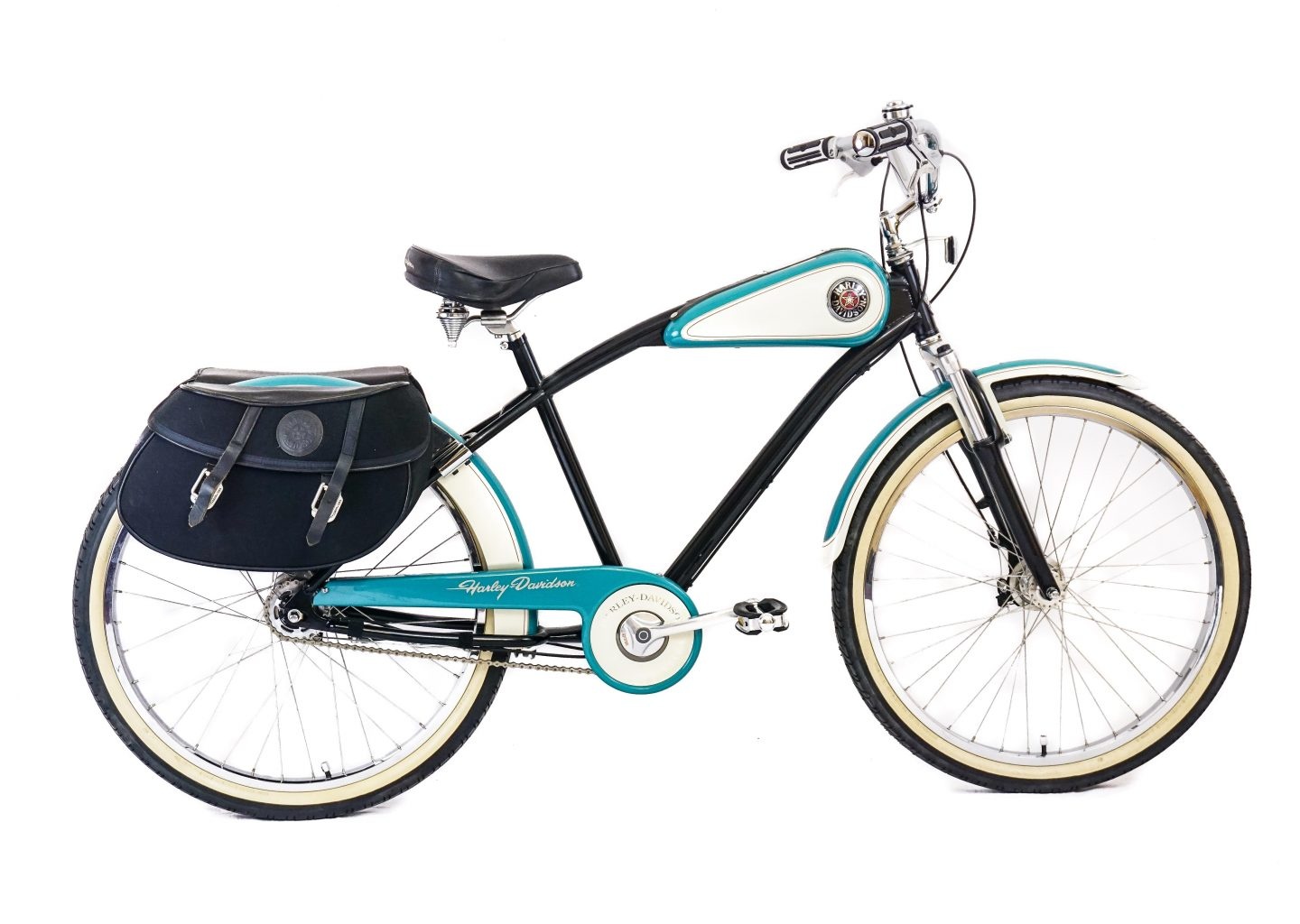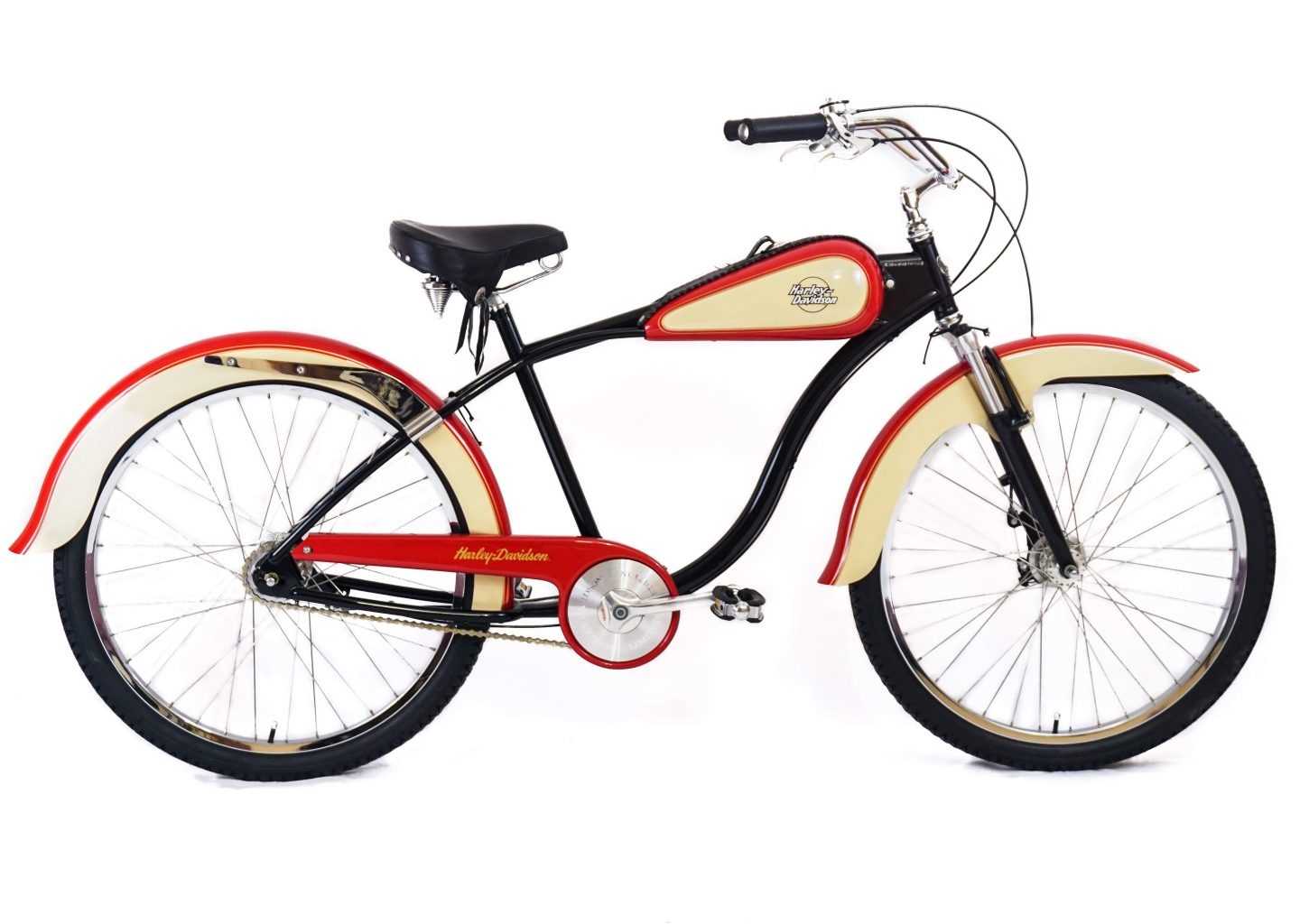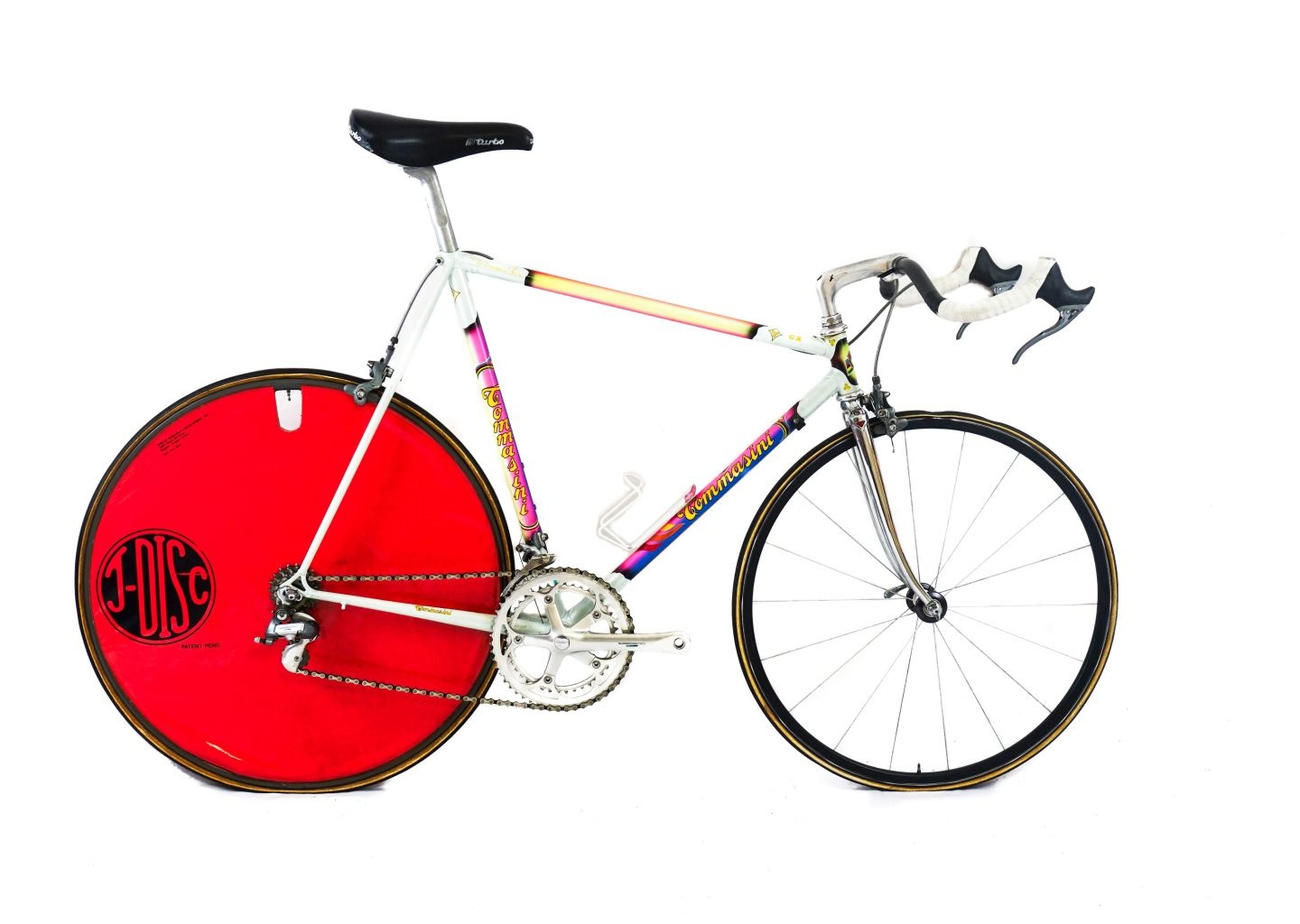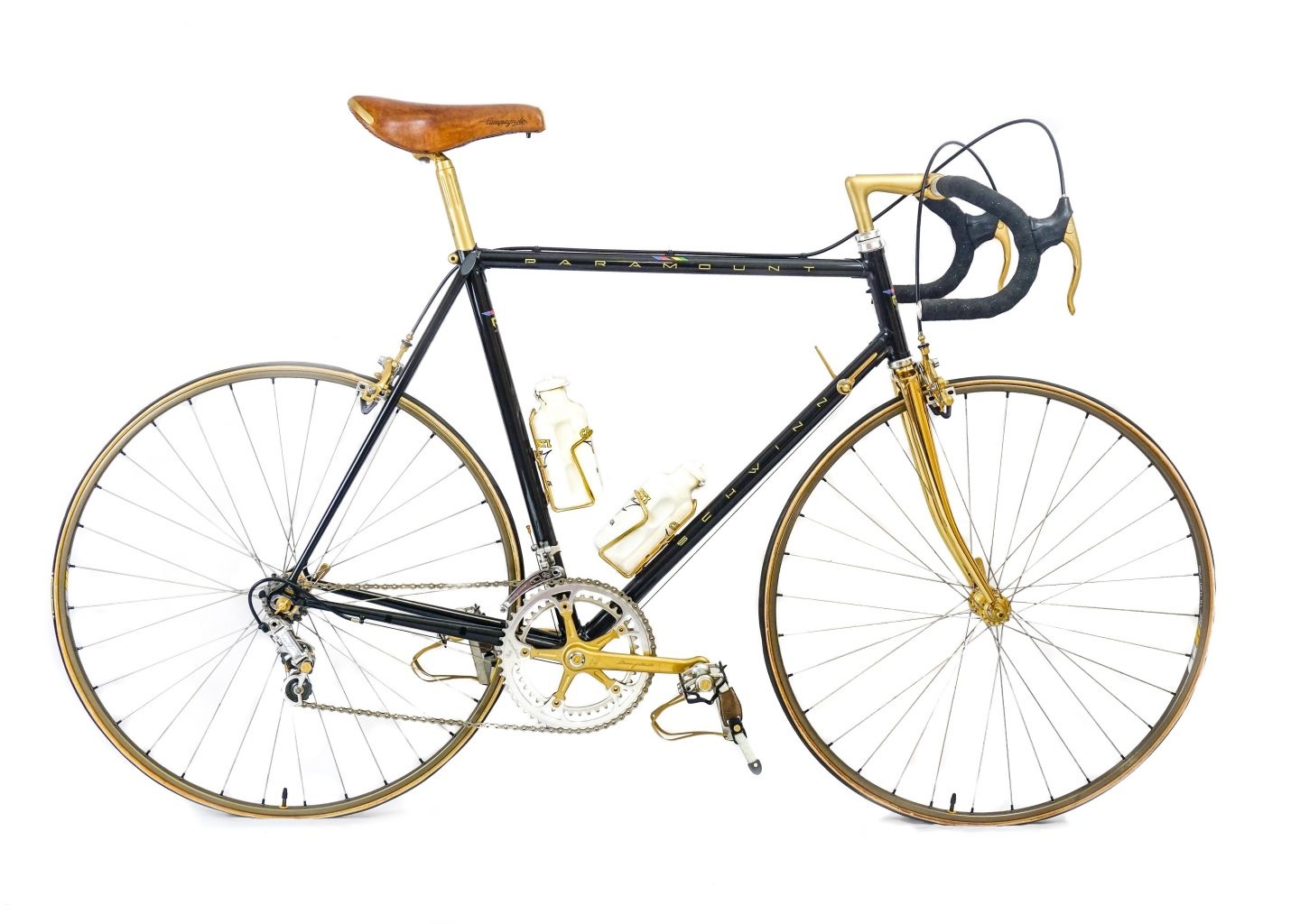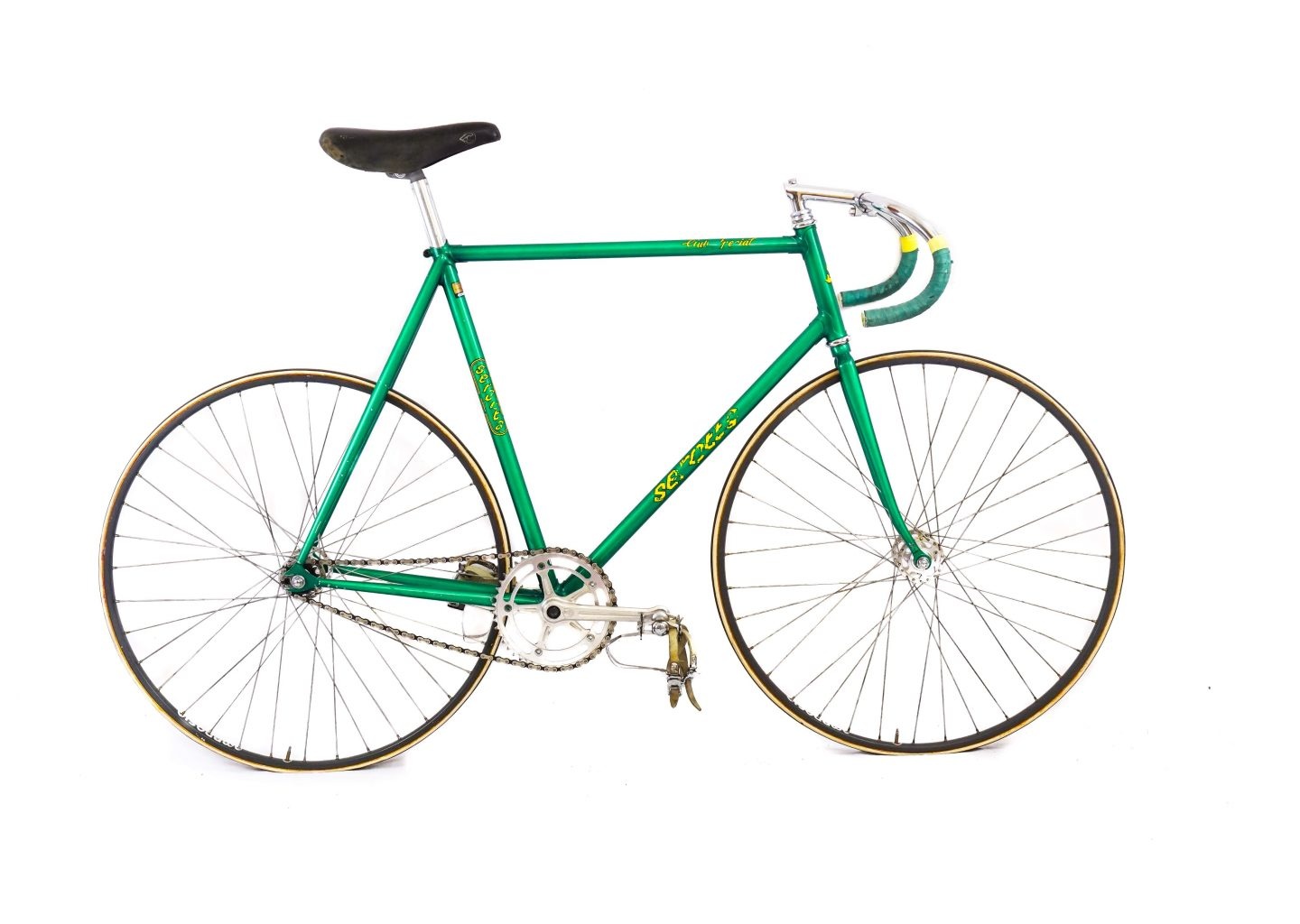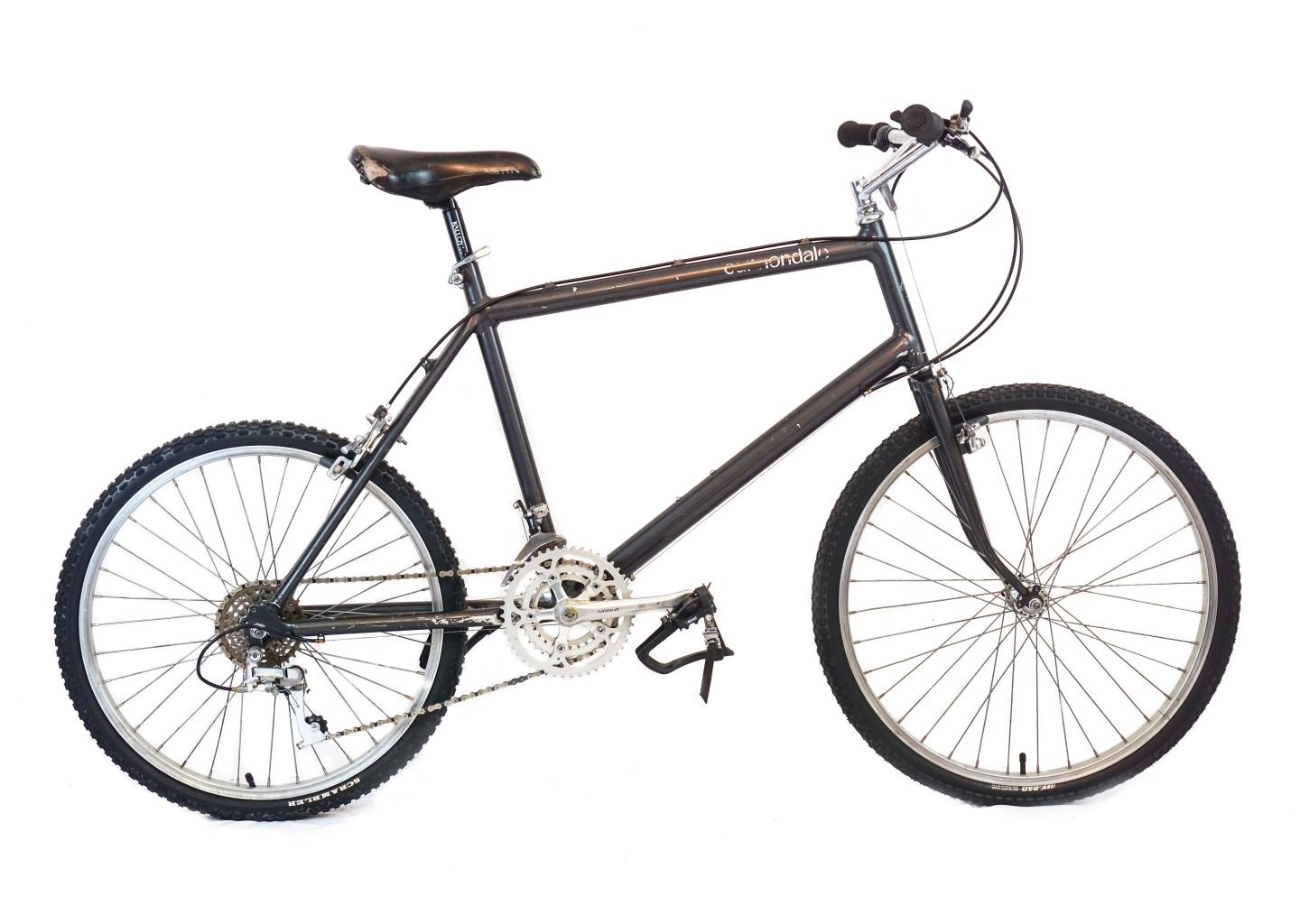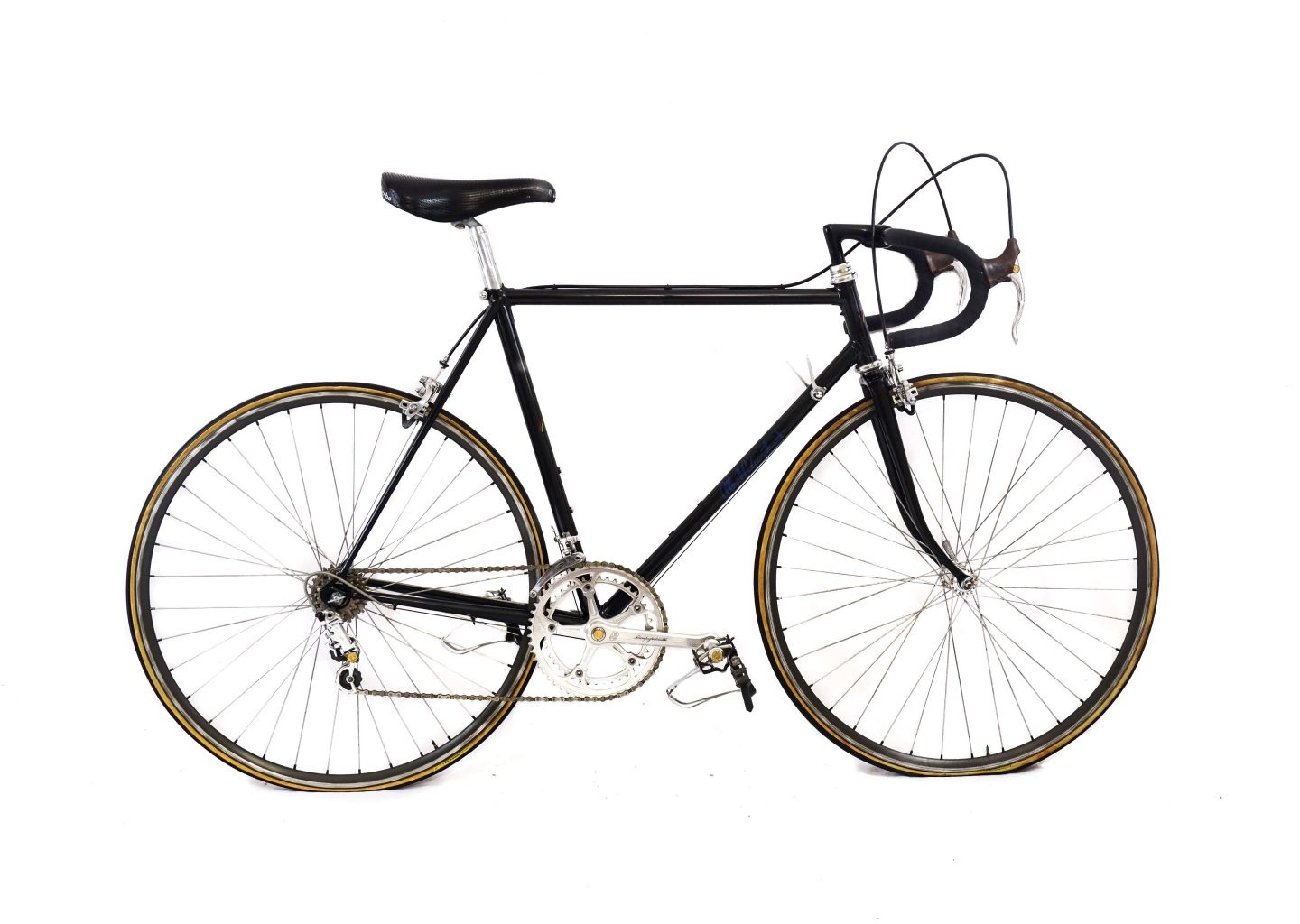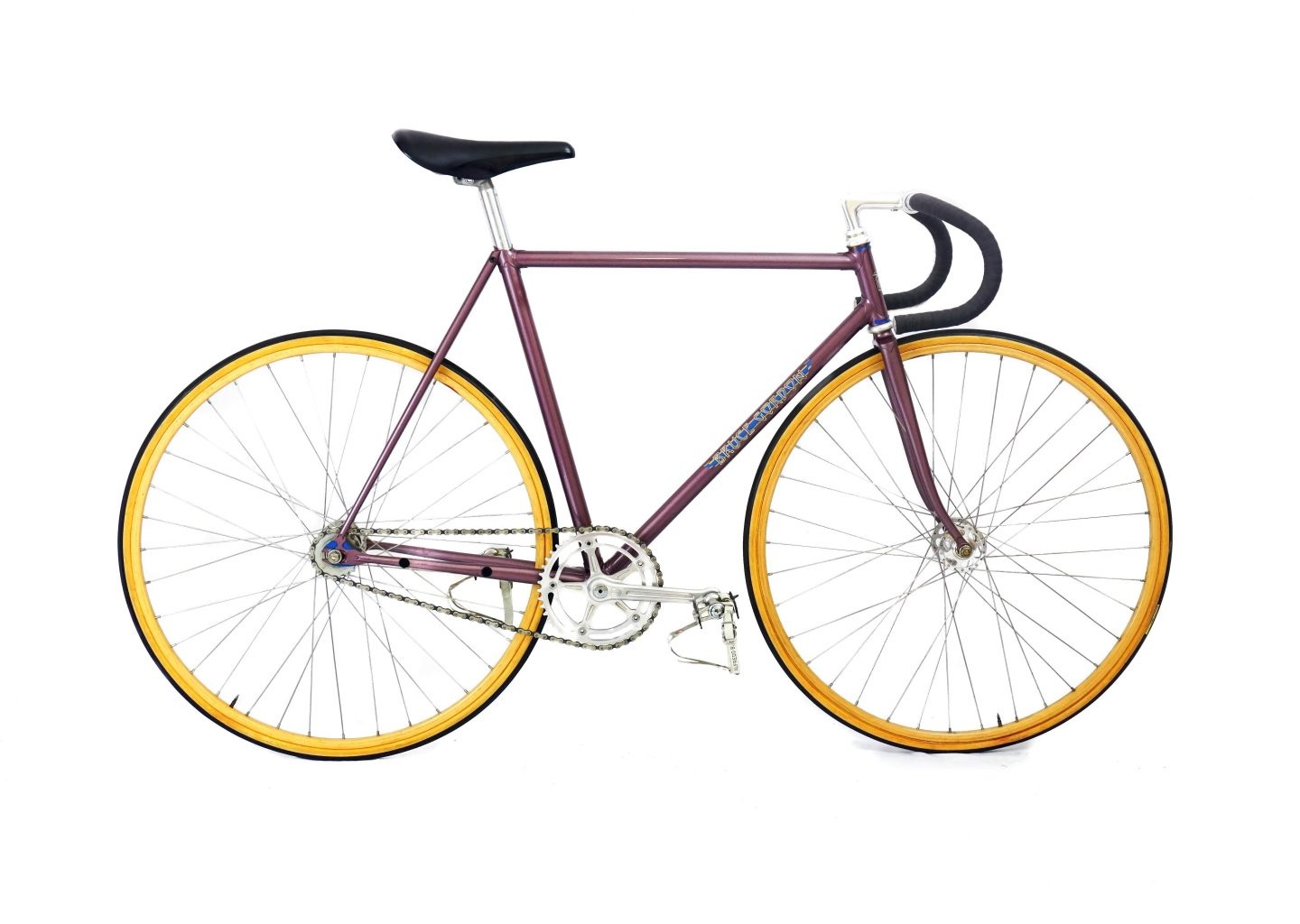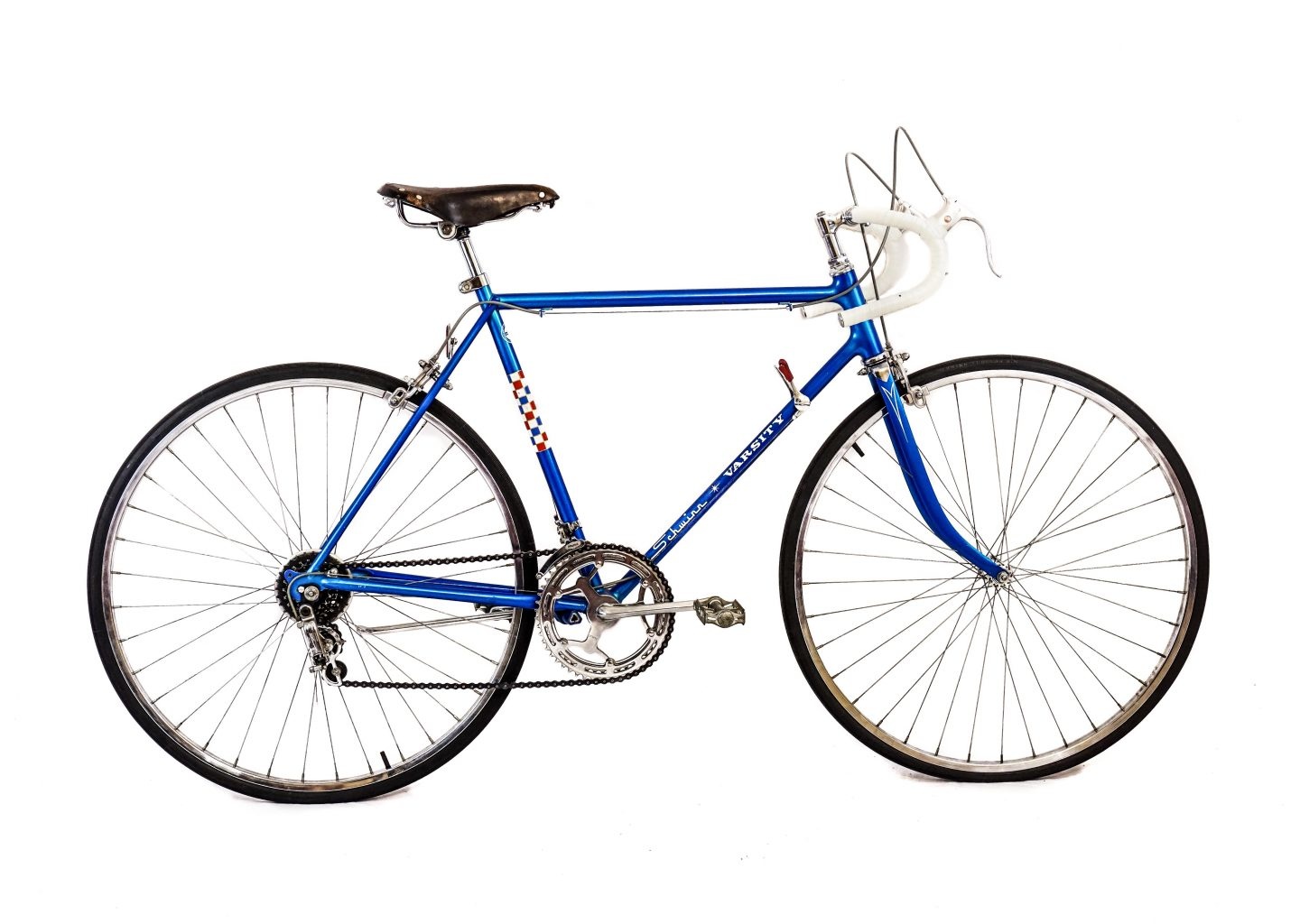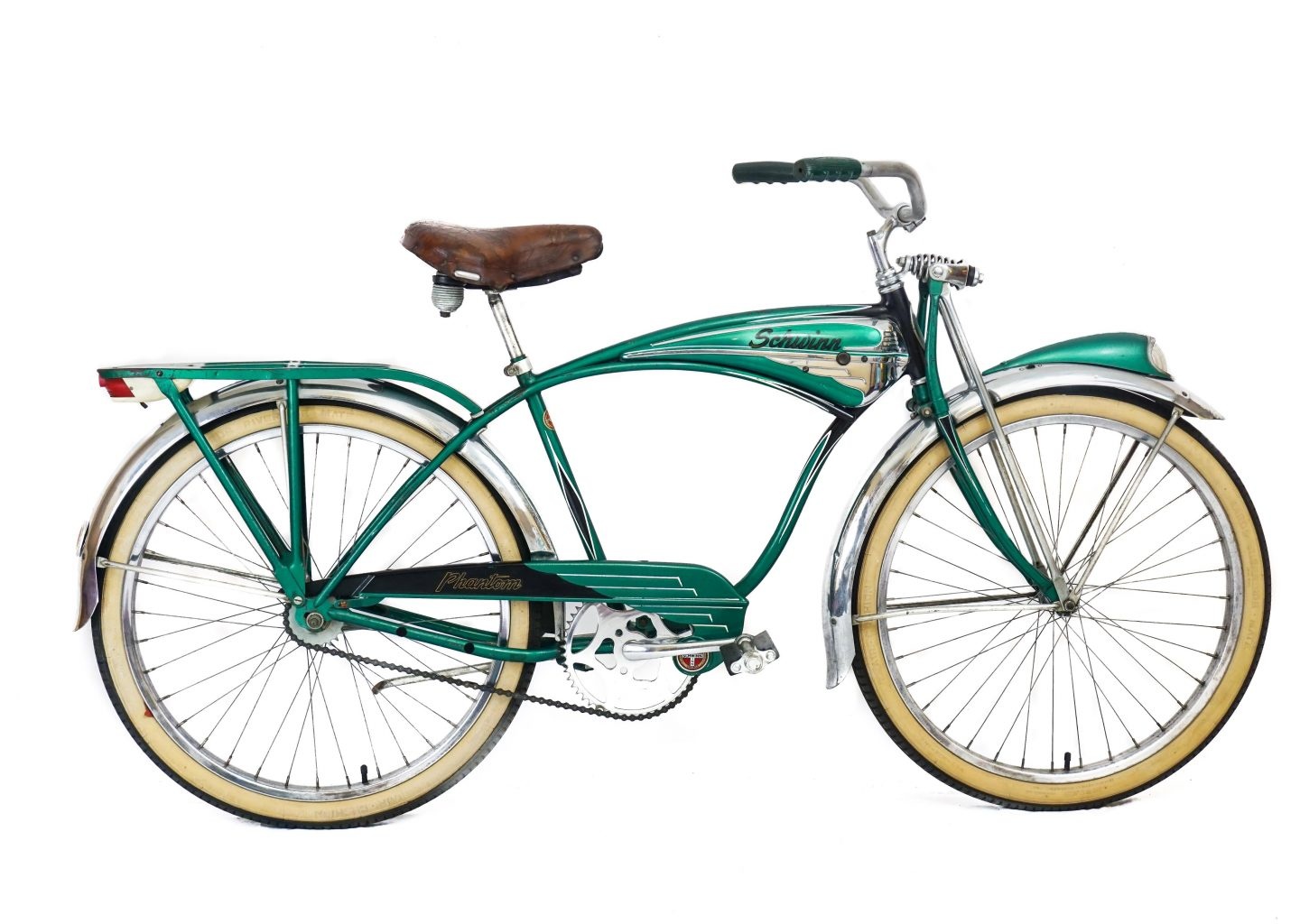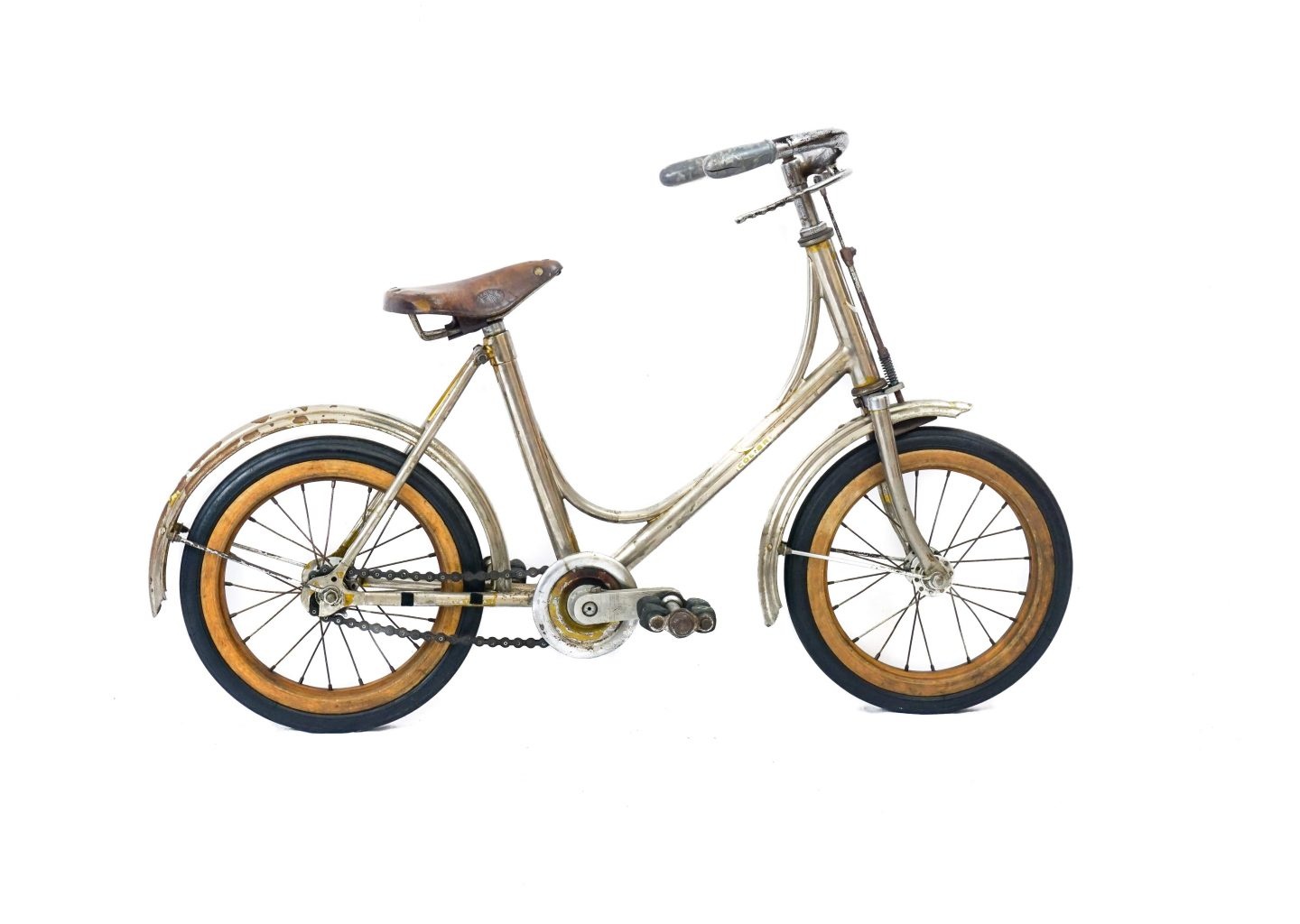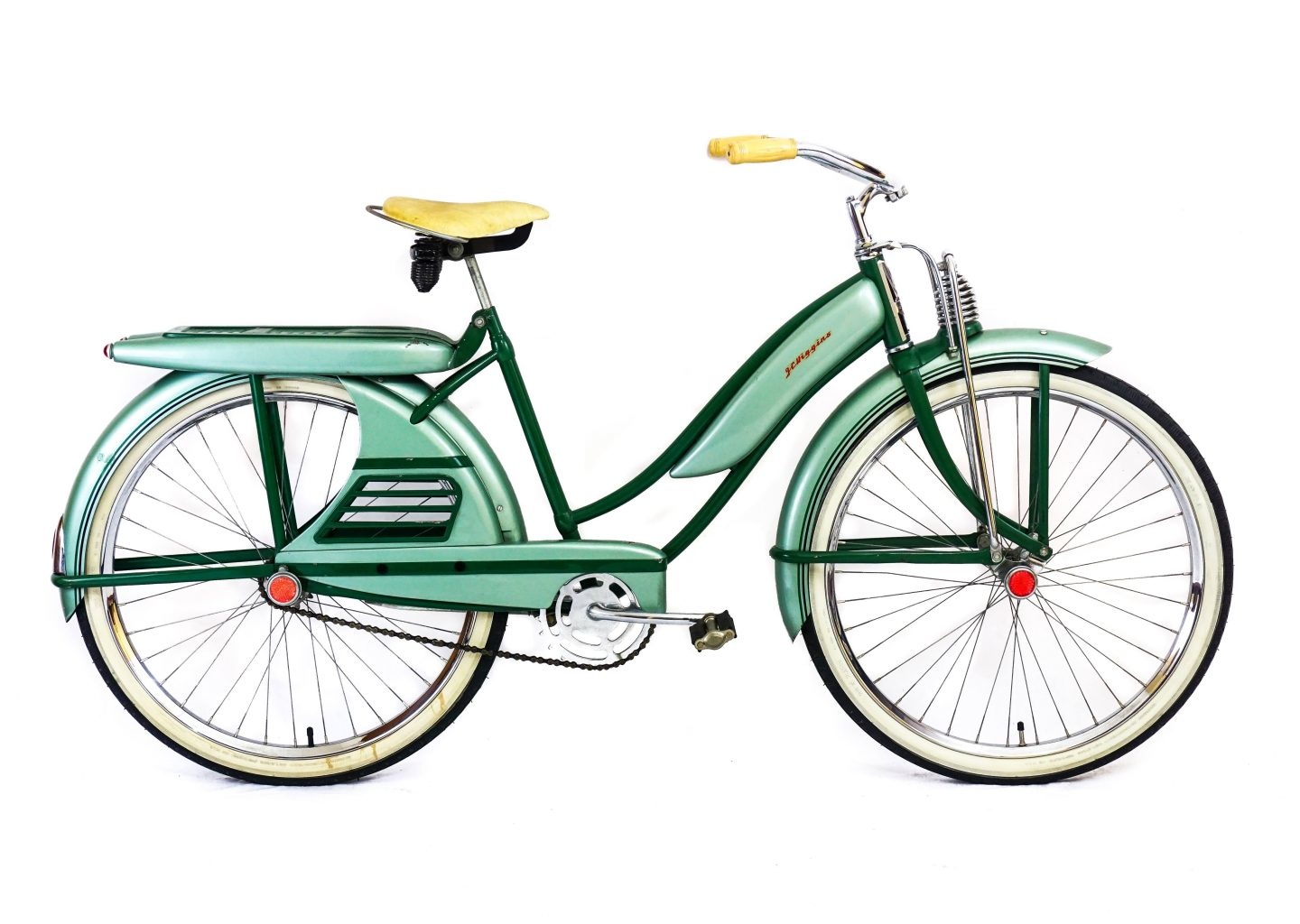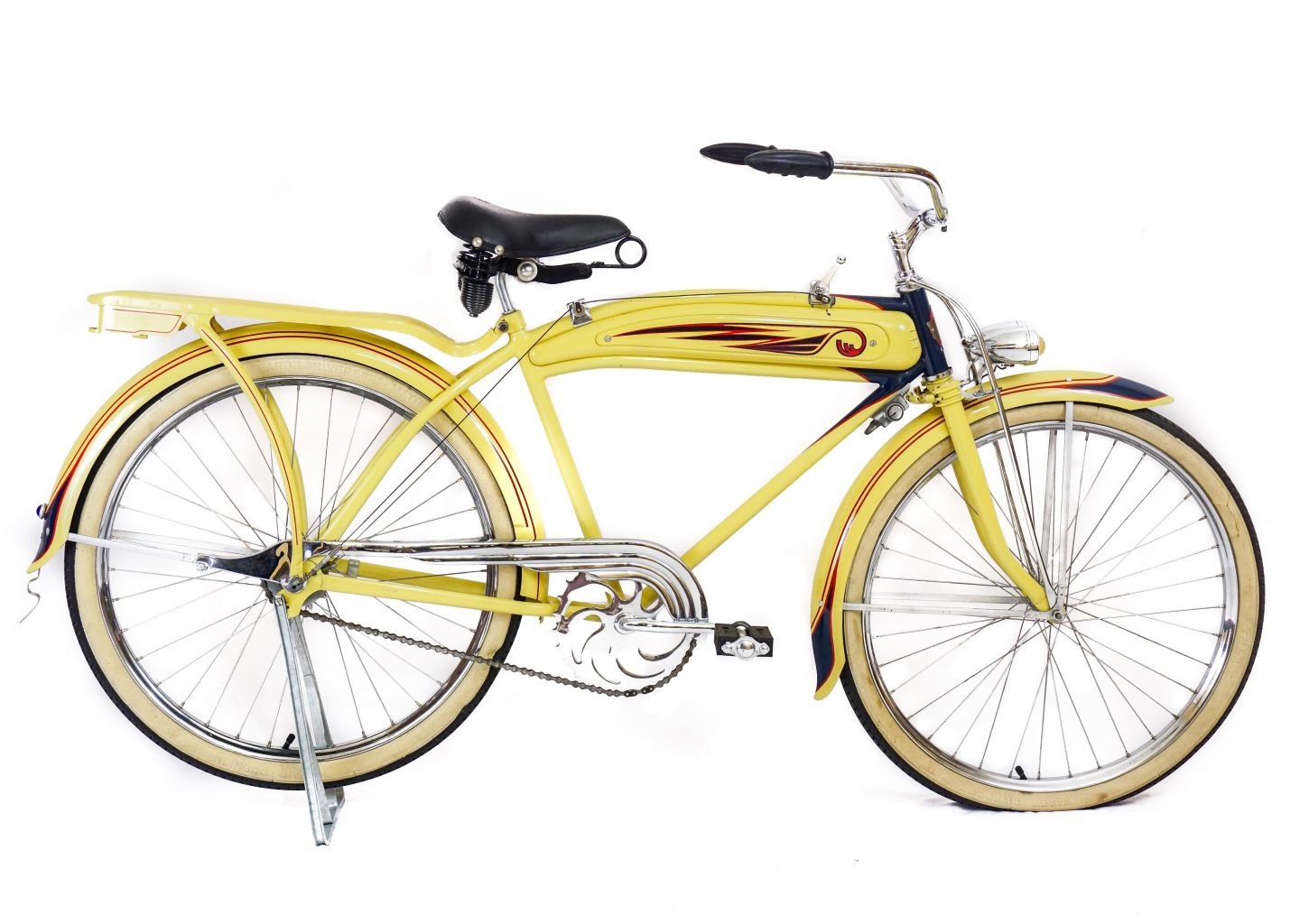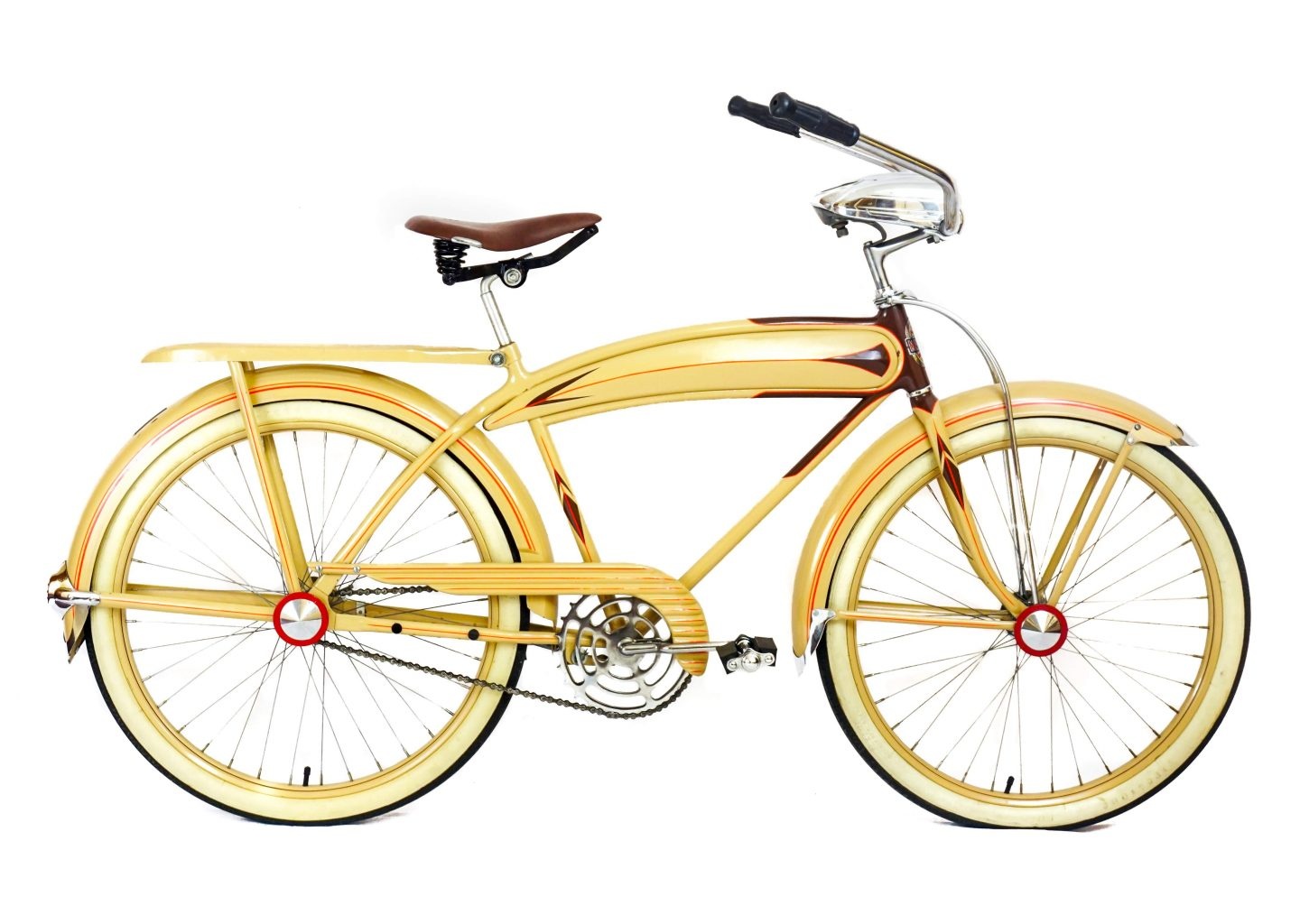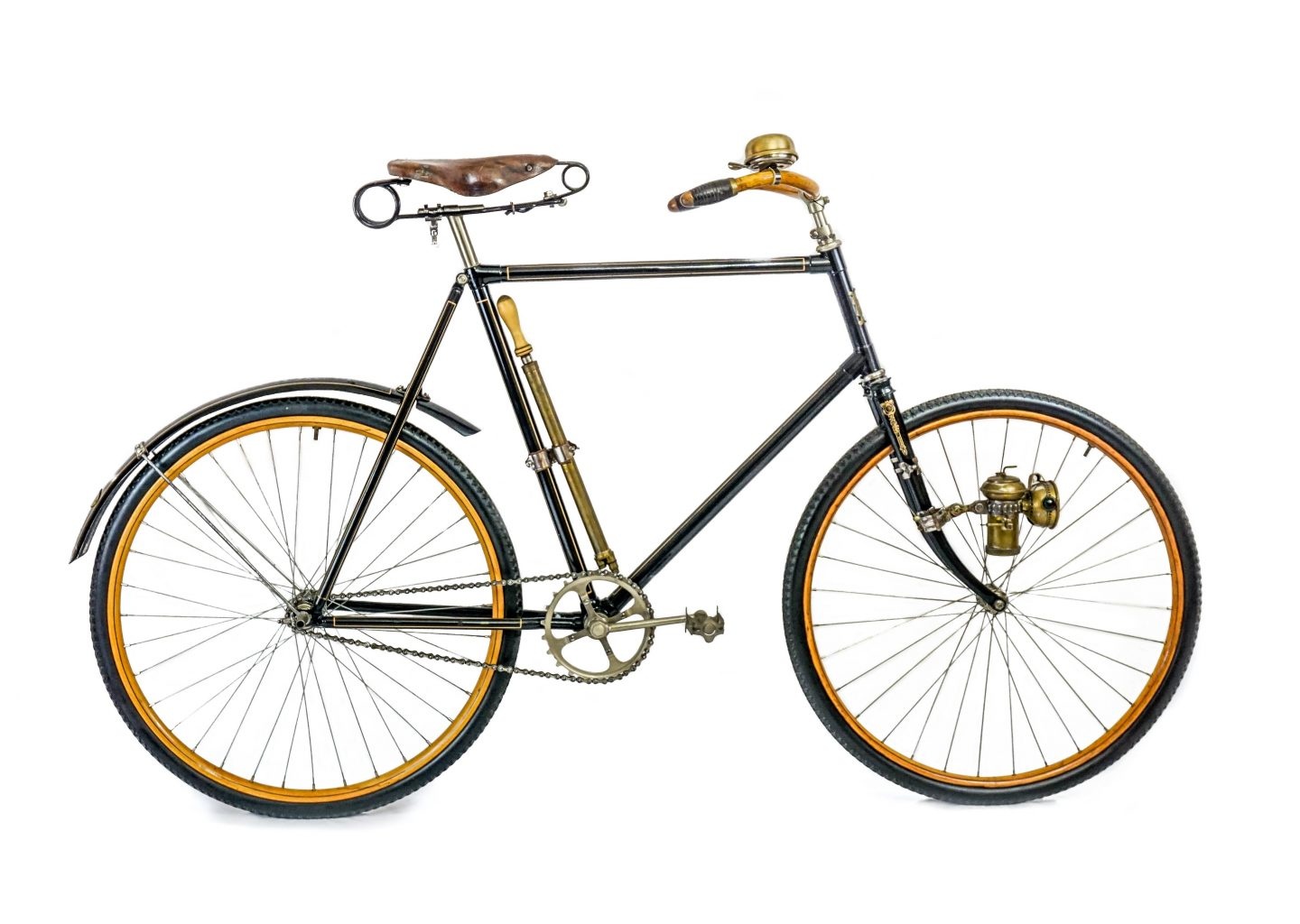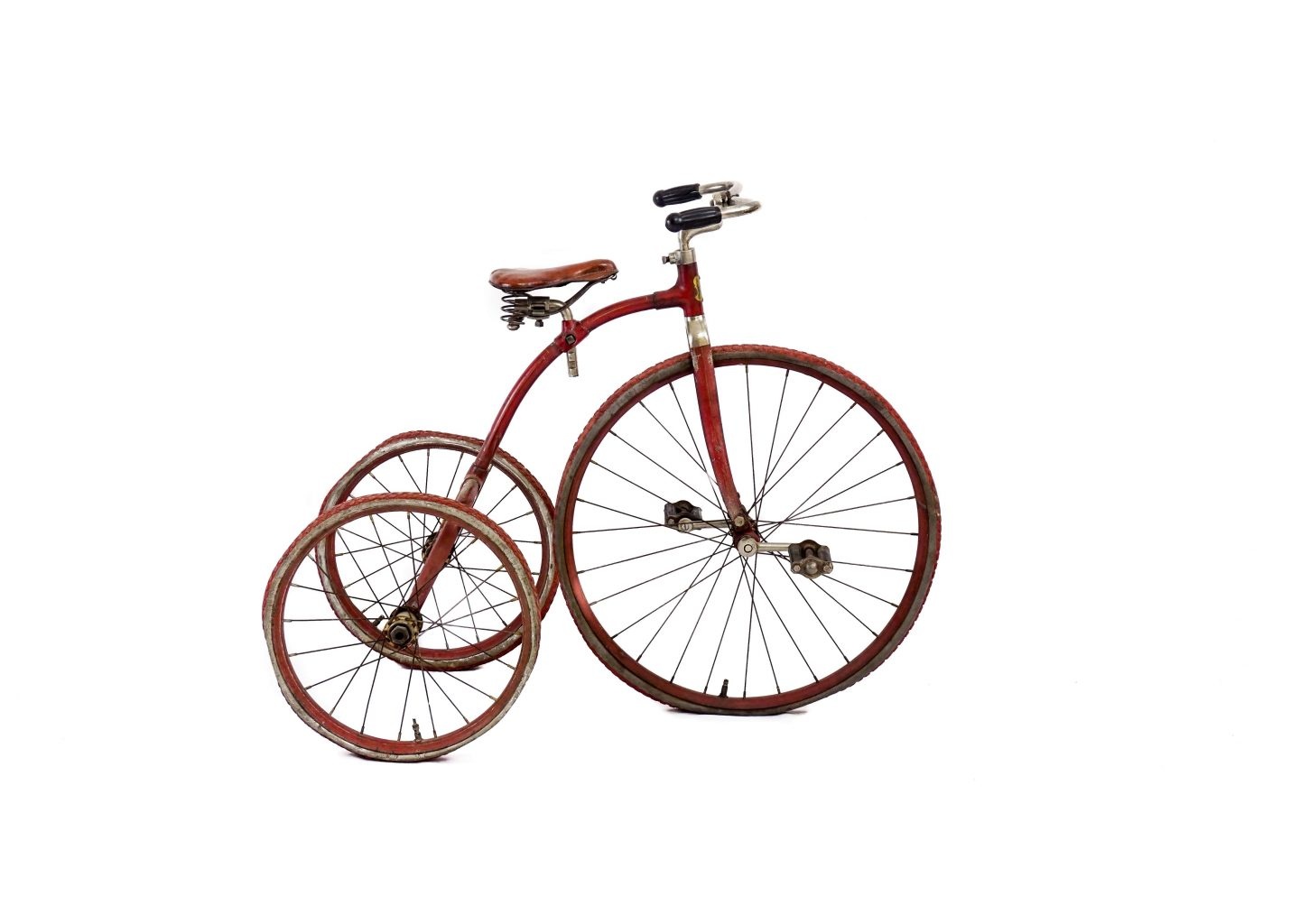The Mantra was Klein’s longest travel full-suspension with a whopping 70mm of travel. One stand-out feature is the URT suspension design in which the rear shock can only compress when seated, making the bicycle stiff and responsive when climbing out of the saddle, yet comfortable when seated on rough terrain. By 1998, these Kleins were produced by Trek Bicycles in Waterloo, Wisconsin.
1998 Harley Davidson - Built by GT Bicycles to commemorate Harley Davidson’s anniversary, the Harley Davidson Astroglides were designed to resemble the classic Harley look. They even share some components with Harley motorcycles, such as the token on the gas tank. Only 1,000 were ever made, and this is #778.
1998 Harley Davidson - Built by GT Bicycles to commemorate Harley Davidson’s anniversary, the Harley Davidson Astroglides were designed to resemble the classic Harley look. They even share some components with Harley motorcycles, such as the token on the gas tank. Only 1,000 were ever made, and this is #2.
The 1996 ProFlex was designed by Bob Girvin to be an efficient, yet active full-suspension mountain bike. The most striking feature is the linkage-driven front suspension, which provided a stiff and responsive ride. The rear suspension linkage was designed to be active in the big and middle chainrings, while becoming more efficient in the small ring with “Dig In Technology.”
1995 Gary Fisher Hoo Koo E Koo “Grateful Dead Edition” - This rare Hoo Koo E Koo was a part of a special edition run with decals designed by Prairie Prince. This collectors item was purchased on August 9, 1995 - the day Grateful Dead lead singer Jerry Garcia died - in memory of the iconic musician. The bicycle was built up and then never ridden. Note the sports card in the rear spokes: That’s basketball legend Bill Walton, a huge GD fan. Visiting UBikes years ago, Bill used his long reach to place the card neatly in the wheel.
1994 Amp Research Design - Bizarre yet cool! Designed and manufactured by AMP Research in Laguna Beach, California. Owned and operated by Horst Leitner, the inventor of the “Horst-Link” drop out, which is well known today in rear suspension tech. The compact F1 linkage fork is a bit of a marvel even today. Horst designed it to emulate the axle path of a telescopic fork, while keeping the moving bits up top, so he could still use cable-operated rim-brakes.
As with all the Schwinn Paramounts, this bicycle was designed with racing in mind. One striking feature of this build is the gold Super Record groupset, designed for Campagnolo’s 50th anniversary (in 1983). This “50/50 bike” has never been ridden, preserved for all to enjoy.
Andy rode this bike when he won the 1988 Giro D’Italia, becoming the first non-European to do so. This bike carried him up the iconic Gavia Pass through a snowstorm, putting him in the Maglia Rosa for the remainder of the race. Although the 7-Eleven team was sponsored by Huffy, their bikes were produced by Serotta. However, after breaking a Serotta frame in the 1988 La Fleche-Wallonne, Hampsten had his frame build by LandShark.
A beautiful piece of bike racing history, this 1986 DeRosa shines in its Ortensia green paint. Ugo DeRosa’s framebuilding made its way into the pro peloton in 1958. Known around the world as the bike Eddie Merckx rode in his winning years from 1973 - 1978. DeRosa was also Merckx’ mechanic during this period.
Custom-built Serotta for world-famous blues musician and banjo player, Otis Taylor. Otis has a deep history with cycling in the Denver, Colorado region. His involvement with track cycling centered around his time coaching three-time US national sprint champion Scott Berryman.
Vintage MTBs don’t get any sweeter than this 1983 Stumpjumper. Among the first mountain bikes to be mass produced, they used steel lugging, canties, and 3x5 gearing to introduce the world to off-road cycling. Over the years, the Stumpjumper has remained an iconic Specialized model, and is one of the best full-suspension bicycles offered today.
Vintage MTBs don’t get any sweeter than this 1983 Stumpjumper. Among the first mountain bikes to be mass produced, they used steel lugging, canties, and 3x5 gearing to introduce the world to off-road cycling. Over the years, the Stumpjumper has remained an iconic Specialized model, and is one of the best full-suspension bicycles offered today.
This 1982 Eisentraut features Campagnolo’s 50th anniversary Super Record gruppo. Framebuilder Albert Eisentraut has a deep history in the American framebuilding community, mentoring many well-known framebuilders such as Joe Breeze, an early mountain bike designer; Bruce Gordon, look for his 1977, 16-pound track bike in the collection; and Mark Nobilette, who built frames for Rivendell Bicycles, Zinn, and GT.
One of Doug’s favorite bikes in the collection. Colnago started producing the Mexico model to celebrate Eddy Merckx’s 1972 world hour record. The Colnago Mexico was a bit different from the Colnago Super and built with thinner Columbus tubes. The Mexico was known for its short, light and stiff race geometry.
Alan frames were constructed by bonding tubes and lugs using a special glue borrowed from the aeronautical industry. Alan was the first company to introduce an all-aluminum road frame made from aerospace-grade aluminum. Lighter and stiffer than steel bikes, Alan bikes climb and descend with confidence.
The Fastback was produced from 1966 - 1976 and shared the spotlight with the Stingray. Essentially a lightweight version of the Stingray, it quickly became a bestseller. This five-speed model combines the easy pedaling of a lightweight with the maneuverability of the original Stingray. The 1969 MSRP of $79 is equivalent to $542 in 2019.
Cinelli represents Italian style and performance. Based in Milan, Italy, Cinelli has manufactured bicycles since 1948. Started by Cino Cinelli who raced from 1937 - 1944, and won the Milan-San Remo in 1943. Beautiful Reynolds lugged steel and retro wheel covers give this track bike a special look.
One of Schwinn’s most popular models of all time and an excellent example of an unrestored original. Manufactured from 1950 to 1954, its “ultra modern” design and rugged steel frame combined with Schwinn’s classic spring fork enabled this bike to stand the test of time! This bike is so solid that you could pull if off the wall, put air in the tires, and go for a ride!
As described in the 1951 Schwinn catalog: “The Starlet is the finest bicycle styled especially for young ladies. A brilliant new bicycle design from the Schwinn drawing boards, the Starlet is queen of the line! Choose from such gorgeous fashion-wise hues as Holiday Rose and Summer Cloud White, Windswept Green and Luscious Lavender combinations. These sparkling pastel colors are further set off by a White Koroseal-top saddle and white grips. Complete with streamlined tank, brilliant Rocket-Ray lamp, sturdy luggage carrier, and sleek chainguard.”
At the top of the Hawthorne line the Zep was advertised as “Supreme beauty - deluxe equipment.” Special features include twin Delta Silver Ray headlights, built-in tail light, three-way lock, and a chrome chain guard. It’s price in 1938 was $34.95. The Hawthorne brand was offered by the Montgomery Ward department store and built by the Cleveland Welding Co.
Manufactured by the Arnold Schwinn Company of Chicago, Illinois. Prior to 1933, bicycle tires were mostly solid. The Motorbike was one of the first bicycles to offer “balloon” tires that were larger in volume and used inner tubes, which greatly improved the cycling experience and helped to propel Schwinn to the top of the industry.
The Stayer or “Gangmaker” style of track bike was specifically designed to be ridden behind a derny motopacer. These bikes hit top speeds of 40-50 mph while riding in the derny slipstream. The reversed fork and smaller front wheel created unparalleled tracking and maximum aerodynamics.
Mead Cycle was a famous bicycle company that once had huge production facilities in England and Chicago, Illinois. They primarily were a mail order operation that sold bicycles worldwide. Of their many bicycle lines, the premier was the Ranger line. From five color choices, most Rangers were painted in “Ranger Brown.”
Monarch Cycle Manufacturing Company was founded by John William Kiser in 1892 with savings from his time with the Chicago Sewing Machine Co. where he worked for about 10 years. The Defiance was a popular model for M.C. Mfg.. Co and was part of the “Golden Age” for bicycle manufacturing and sales. Sold for about $100 each, they were offered with a few options including frame pump and lantern.
Manufactured by the ACME Manufacturing Company of Reading, Pennsylvania. Priced from $40 to $100, ACME’s aim was to create high-quality bicycles at affordable prices. Each catalog included a telegraph code with which to order a new bicycle. The order for this bike might read: ABOVE BENEFIT TUBE HOLD SOLID GENERAL PROUD CAPTURE, which means: Ship immediately by express. Model 6, 23-inch frame. Vim single tube tires. Handle bar, drop pattern. Saddle, Stormer, Russet. Gear 63. Pedals, Combination. Green finish frame.
Manufactured by Sterling Bicycle Company (also known as Sterling Cycle Works) of Chicago, Illinois. The Sterling was made popular by Annie “Londonderry” Kopchovsky’s ride “around the world” in 1894. At the time, you could be the proud owner of a Sterling bicycle for $50-$100, depending on model and year.
Manufactured by the Pope Manufacturing Company of Boston, Massachusetts. Columbia bicycles were the first bicycles produced in the US. Production started in 1878, at the Weed Sewing Machine Company in Hartford, Connecticut. This Columbia Light Roadster is one of the last new high wheeler models since safety bicycles became more en vogue in the following years. It retailed for $100-$135.
Manufactured by the Hickory Wheel Company of South Framingham, Massachusetts. These bikes were built with the company’s patented hickory wood wheels and ball bearing hubs. The Hickory Wheel Company manufactured most of the wooden wheels for bicycles from 1880 - 1920.



